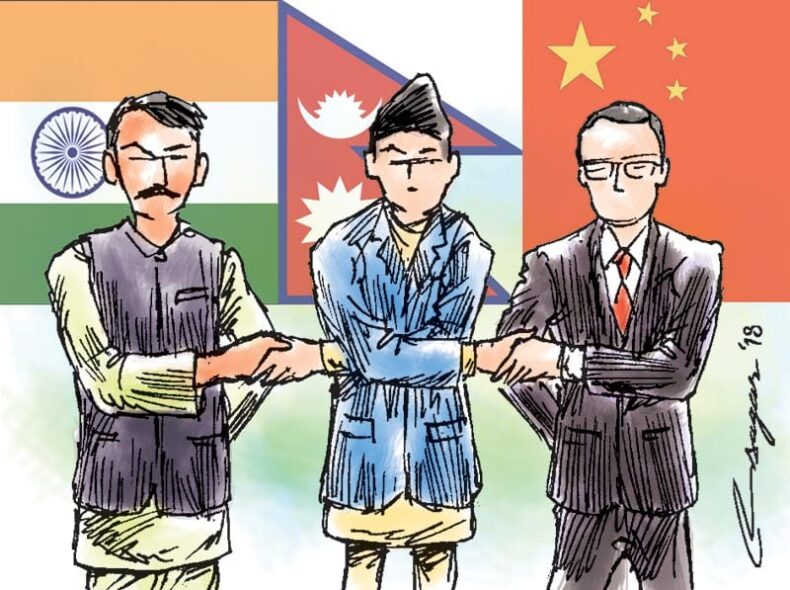On November 20, Nepal and its citizens will head to the polls to choose their 11th government. Nepal was under the monarchical rule for 200 years and in 2008 this rule shifted from monarchy to democratic rule.
Although the continuous formation and breakdown of alliances have plagued Nepal’s politics, leaving voters disillusioned.
This will be the first time in the nation’s parliamentary history that elections are held following the conclusion of a full term of the legislature.

Promises are being made
Political parties in Nepal have announced their manifestos ahead of the general elections on November 20 and will soon start running for office.
The main opposition party, the Communist Party of Nepal-Unified Marxist Leninist, has indicated nationalism and criticism of India on the border issue as being their election promises, while at least two major parties—the Maoists and the pro-monarchy Rashtriya Prajatantra Party—promise drastic changes in the fundamental features of the constitution this election.
Oli, who took the initiative and was successful in getting the Parliament to unanimously approve the new map while serving as Prime Minister in 2019, is hoping to win over the locals in the wake of two deaths, one of a youth in the Mahakali River and another of a 9-year-old in a road blast, for which India is held responsible.
The Indian state of Uttarakhand shares a border with Darchula, and there, the two nations are at odds over three areas—Lipulek, Limpiadhura, and Kalapani—that they each say belong on their maps.
In contrast to the RPP, which is growing in support among the populace, the Maoist Party has chosen a radical reform in the electoral system, favouring a fully proportional system over the current mixed one and a directly elected executive President and cabinet.
Rajendra Linden, Chairman of the RPP, stated that the party supports a Hindu state, a monarchy as the guardian of the country, and a directly elected prime minister.

The 2022 election in numbers
Nepal has roughly 30 million people, according to the most recent census, which was issued this year. Through their directly elected representatives, more than 17.9 million people, including 8.8 million women, 9.1 million men, and 185 members of the LGBTQI community, will choose a new prime minister, president, speaker, and chief ministers of seven provinces.
The House of Representatives has 275 seats in total. Of these, 110 are chosen using proportional representation (PR) and 165 using first-past-the-post (FPTP) voting.
Over 2,400 party and independent candidates have filed their nomination papers for the 165 seats in the FPTP category. About 200 women are running for office. There is just one candidate who belongs to the LGBTQI community.
Over 3,000 candidates are running for the provincial assembly. There are 550 seats in the provincial legislature, with assemblies having 40 to 110 representatives depending on the size of the electoral district. There will be about 300,000 people working to secure the elections.

Nepal election is critical for India
India’s ambassador to Nepal, Naveen Srivastava, presented the vehicles to Nepal’s finance minister, Janardan Sharma, during a ceremony on Tuesday afternoon at the Ministry of Finance. India has gifted 200 vehicles, Of the 200 cars, the Indian Embassy in Kathmandu reports that 120 will be used by Nepal’s security forces to mobilise during the elections and the other 80 by the country’s Election Commission.
A stable Nepali administration that would prioritise its strategic interests is essential for India. However, stability is unlikely even in the following administration given the infamy Nepalese politicians have amassed due to their unquenchable quest for power and the prime ministership.
In addition to causing severe political unrest within Nepal to assure his government’s survival, the pro-China Oli’s tenure as prime minister caused New Delhi some difficulty. He vigorously stoked nationalism, even changing Nepal’s map in response to the Kalapani territorial dispute with India. He caused relations between Kathmandu and New Delhi to become considerably chilly.
Given its connections to civilization and culture and geographic proximity, India historically thought of Nepal as its backyard, but as China has made significant inroads and courted the nation with resources and infrastructure projects, India’s influence there has been declining. Even more concerning for India is the fact that Beijing has established strong bonds with Nepalese officials from across the political spectrum in addition to the Communist parties. The outcome of the election is therefore far more significant for New Delhi.

China’s increasing interest in Nepal politics.
Concerning consequences exist for Kathmandu’s democracy as a result of China’s growing political engagement in Nepal.
Politics in Nepal appears to be characterised by the flimsy alliances that emerged before and after the 2017 election. No party has served a full five-year term in power in Nepal when democratic elections have been held, which has weakened public trust.
Voter turnout decreased compared to the municipal elections in 2017 in this year’s May elections. Chinese interference is possible given these flaws. The already precarious democratic institutions of Nepal may suffer as a result of the CCP’s attempts to stabilise the country’s political environment.
This is supported by the CCP’s involvement in other aspects of Nepali public life. The temporarily united Nepal Communist Party signed an agreement with the CCP in September 2019 to improve collaboration between Nepal and Chinese departments and agencies, most worryingly the police.
The People’s Armed Police of China were invited to assist and train their Nepalese counterparts as a result of the decision. The People’s Armed Police is by definition political because it must represent the CCP’s interests. Any collaboration between China’s police and its Nepali counterpart, therefore, undermines political neutrality—threatening the notion of a free society in Nepal.
These events underline the serious threat to Nepal’s democracy that exists before this month’s elections. Undoubtedly, the CCP will try to court the winning party or combination.
Read more: What’s Happening to Nepal’s holiest river Bagmati?
Also read: Nepal: Return of the tigers brings both joy and fear













